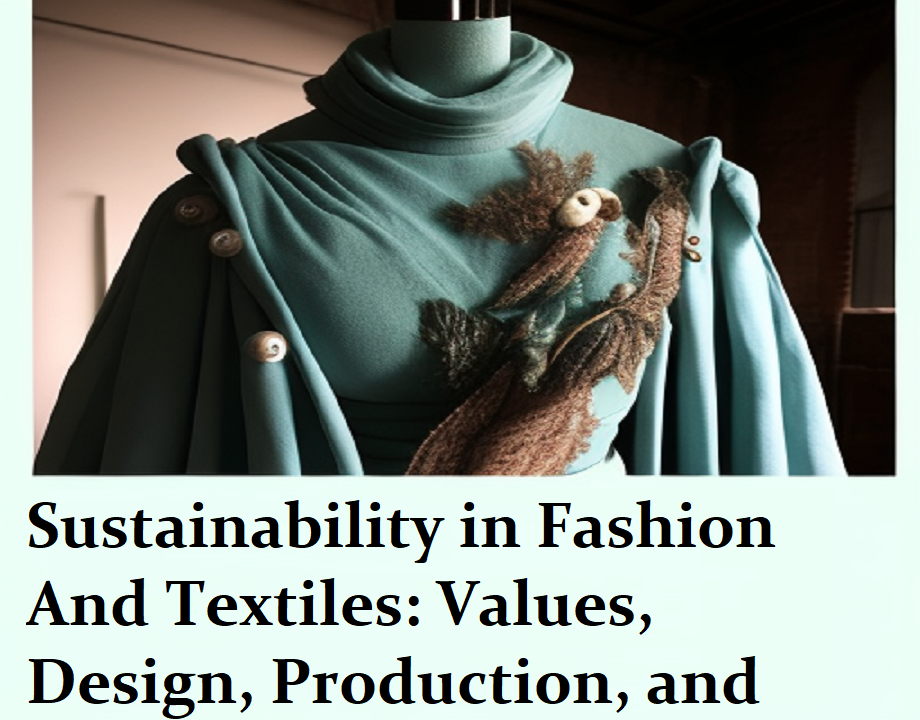Environmental sustainability in the textile industry refers to the use of sustainable production methods and materials to minimize the environmental impact of textile production and consumption.
The textile industry is one of the largest industries in the world, with a significant environmental impact. Textile production involves the use of large amounts of water, energy, and chemicals, as well as the release of pollutants into the air and water. In recent years, there has been an increasing awareness of the need to address the environmental impact of the textile industry and to move towards more sustainable practices.
A Comprehensive Guide to Environmental Sustainability in the Textile Industry” aims to provide a comprehensive overview of the challenges and opportunities of environmental sustainability in the textile industry.
The Impact of Textile Production on the Environment
Textile production has a significant environmental impact, including the use of large amounts of water, energy, and chemicals, as well as the release of pollutants into the air and water. Environmental impact of textile production, including the carbon footprint of different textile materials, the water consumption of textile production, and the release of hazardous chemicals into the environment.
The textile industry is one of the largest polluting industries in the world, and its impact on the environment is a major concern. The production of synthetic fibers, for example, is highly energy-intensive and generates significant amounts of greenhouse gases. Cotton production, on the other hand, requires large amounts of water and pesticides, which can have harmful effects on the environment and human health.
In addition to the environmental impact of textile production, there is also the issue of textile waste. Textile waste is a major contributor to the global waste problem, with millions of tons of textile waste ending up in landfills every year. This waste not only takes up valuable space but also releases harmful chemicals into the environment as it decomposes.
Addressing the environmental impact of textile production and waste requires a holistic approach that considers the entire lifecycle of a textile product, from raw material production to disposal. This approach includes the adoption of more sustainable practices in textile production, such as the use of renewable energy sources, the reduction of water and chemical use, and the implementation of circular economy principles.

Sustainable Textile Materials and Fibers
The choice of textile materials and fibers has a significant impact on the environmental sustainability of a textile product. sustainable textile materials and fibers, including natural fibers such as organic cotton, linen, and hemp, and alternative fibers such as bamboo, Tencel, and recycled polyester.
The environmental benefits and challenges of each type of fiber, including its carbon footprint, water consumption, and use of pesticides and chemicals. Explores the social sustainability considerations of textile materials, such as fair labor practices and worker safety.
In addition to the environmental and social sustainability considerations, the performance and durability of sustainable textile materials and fibers, highlight the importance of choosing materials that are both sustainable and functional.
Sustainable Textile Production Processes
The production of textiles is a complex process that requires significant amounts of energy, water, and chemicals. Explores the various stages of textile production, including spinning, weaving, dyeing, and finishing, and discusses the environmental impact of each stage.
The importance of adopting sustainable production processes, such as the use of renewable energy sources, the reduction of water consumption and wastewater discharge, and the elimination of harmful chemicals. The potential of new technologies, such as digital printing and 3D knitting, is to reduce waste and increase efficiency in textile production.

Circular Economy Principles in the Textile Industry
The linear model of textile production, in which raw materials are extracted, processed into textiles, and then disposed of after use, is a significant contributor to environmental pollution and waste. The potential of circular economy principles to promote sustainability in the textile industry by keeping materials in use and reducing waste.
The various strategies of the circular economy, including designing for durability and recyclability, creating closed-loop supply chains, and promoting reuse and repair. The potential of new technologies, such as chemical recycling and textile-to-textile recycling, to enable the circular economy in the textile industry.
Sustainable Textile Supply Chains
The textile supply chain is a complex network of actors, including raw material suppliers, manufacturers, retailers, and consumers. The sustainability of the textile industry depends on the responsible and sustainable practices of all actors in the supply chain. The importance of sustainable textile supply chains and the strategies that can be used to promote sustainability at each stage of the supply chain.
The ability to trace the origin of raw materials and the conditions under which they were produced. The importance of promoting sustainable practices in textile manufacturing, including reducing waste and emissions, promoting energy efficiency, and ensuring fair labor practices.
Sustainable Textile Recycling
Textile waste is a major environmental problem, with millions of tons of textiles ending up in landfills each year. The importance of textile recycling as a strategy for reducing textile waste and promoting sustainability in the textile industry.
Explores various textile recycling technologies, including mechanical, chemical, and textile-to-textile recycling. The potential of upcycling, which involves turning waste textiles into new products of higher value, is to promote circularity in the textile industry.
Conclusion
Environmental sustainability is critical for the textile industry to ensure a sustainable future for generations to come. Sustainable production methods and materials, certification and regulation, supply chain transparency, and consumer choices are all essential for promoting sustainability in the industry. By making informed choices and supporting eco-friendly practices, we can protect our planet’s natural resources and create a more sustainable future.

